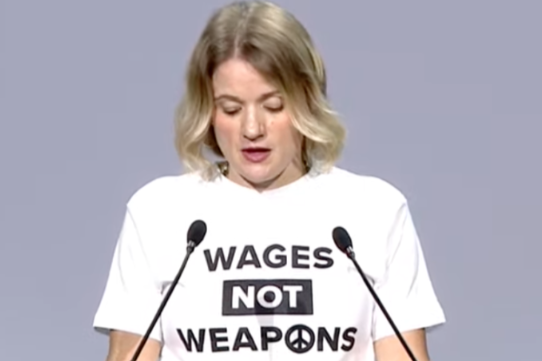The new government has put forward an amendment to the Mutual Defence Agreement (MDA) which removes the need to renew it. Since the bilateral nuclear pact was first signed with the USA in 1958, the MDA has been brought before parliament for approval every 10 years. When the amended MDA – the Agreement for Cooperation on the Uses of Atomic Energy for Mutual Defence Purposes to give it its full title – is signed this year Britain’s nuclear sharing arrangement with the US becomes permanent.
Amending the MDA was one of the Prime Minister’s first foreign policy initiatives. Defence Secretary John Healey presented amendments to parliament on 26 July, three weeks after Labour took office. No change in the law is needed for the MDA to become a permanent agreement. As CND General Secretary Kate Hudon observes ‘this spells farewell to even the smallest notion of parliamentary responsibility’ for Britain’s foreign and security policies.
In an explanatory memorandum Healey explained the MDA ‘provides the necessary requirements for the control and transmission of submarine nuclear propulsion technology, atomic information and material between the UK and US, and the transfer of non-nuclear components to the UK’. A Freedom of Information request from the Nuclear Information Service reveals that 955 components were imported from the US between 2020-2023.
The MDA is the basis on which the US provides Britain with nuclear weapons materials and know-how without which Trident could not function. As Richard Norton Taylor rightly points out: ‘It gives the lie to persistent claims by the Ministry of Defence that Britain’s submarine-launched nuclear arsenal is “operationally independent”.’
In exchange for nuclear capability, Britain provides the US with intelligence facilities. Menwith Hill makes signals intelligence available to the US from across the norther hemisphere, intercepting both military and commercial electronic communications. Fylingdales radar station is one of three that comprise the USA’s Ballistic Missile Early Warning System. Information from them initiates a nuclear response from the US or Britain to a perceived threat.
Healey’s memorandum also claims the MDA ‘is consistent with the UK's obligations under the Nuclear Non-Proliferation Treaty and commitments under the Comprehensive Nuclear-Test-Ban-Treaty’. It does not provide for ‘the transfer of nuclear weapons or other nuclear explosive devices, or control over such weapons or explosive devices’.
On the contrary, as the world moves closer than ever before to nuclear war, extending the Mutual Defence Agreement indefinitely is not only a further step in perpetuating Britain’s nuclear arsenal but also in promoting proliferation. The US exercises de facto control over Trident by virtue of the materials and know-how provided. Inevitably, this means too that the US exercises leverage over Britain’s foreign and security policy which is likely to be enhanced by the MDA amendment.






